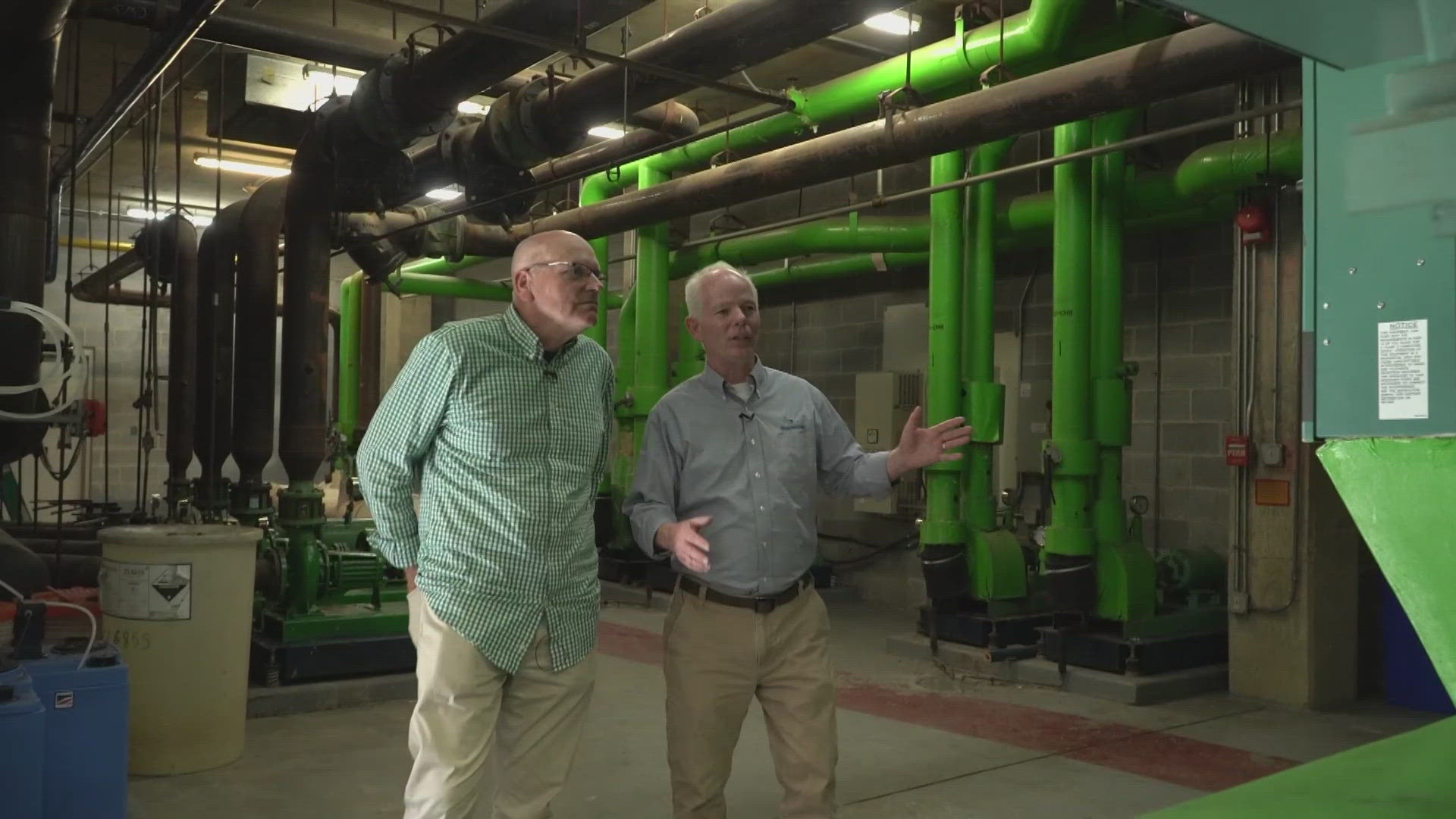SILVER SPRING, Md. — The machinery that keeps many tenants cool in the D.C. region has reached the limits of its capability, according to indoor air engineers who blame the effects of climate change.
Recent dramatic swings from highs in the 90s to lows in the 40s in a matter of days have exacerbated seasonal changes for building engineers and superintendents aiming to comply with an increasing number of legal mandates to provide air conditioning, according to experts consulted by WUSA9.
"The buildings of the past are asked to perform in today's world, which they never anticipated," said Robert Bean, a fellow with the American Society of Heating, Refrigerating and Air-Conditioning Engineers, (ASHRAE) which sets standards for buildings around the world.
"It's not just the mechanical systems that are having problems. It's the buildings as well that are having problems and the two of them together create a lot of grief when you get these extreme climate changes," Bean explained.
For perspective, WUSA9 consulted with Dave Kyle, a career indoor air engineer with Trademasters Service Inc. of Lorton, Virginia.
Kyle explained that the cooling systems common in mid and high-rise apartment buildings are frequently unable to respond to the temperature swings, leaving HVAC engineers engaged in a guessing game as to when to start up a building's cooling system, which is regarded as a seasonal change - not a same day operation.
"They are coming out of a winter hibernation mode," Kyle explained.
Switching from heating to cooling is a process that can take days for a system and building to adjust to, Kyle said. Reversing the changes is costly, and by the time the system is providing heat again, the weather may have made another 180-degree turn.
"We can't turn it around on a dime. It's one or the other," Kyle said.
Wild temperature swings have plagued the D.C. region since April 29, when 91 degrees was recorded at Reagan National Airport. Only two days before the morning low was nearly 40 degrees cooler.
Meanwhile, recent annualized data from the National Weather Service shows the likelihood of setting record highs is 20 times greater than the chance of hitting record lows, as the climate warms.
Bean predicted local governments will continue to be challenged because replacing HVAC systems and renovating buildings can be a decades-long process
He recommended that policymakers pay even more attention to emergency preparedness for hot weather events by working with landlords to create cooling centers within high-density complexes, with particular attention to vulnerable individuals.
Do you have a news tip on this story or any other story? We want to hear from you. Tell us about it by emailing newstips@wusa9.com.
MORE WAYS TO GET WUSA9
DOWNLOAD THE WUSA9 APP
Apple App Store: WUSA9 News on Apple
Google Play Store: WUSA9 News on Android
HOW TO ADD THE FREE WUSA9+ APP TO YOUR STREAMING DEVICE
ROKU: add the channel from the ROKU store or by searching for WUSA9.
For both Apple TV and Fire TV, search for "WUSA9" to find the free app to add to your account. Another option for Fire TV is to have the app delivered directly to your Fire TV through Amazon.
SIGN UP TO RECEIVE WUSA9 NEWSLETTER
Subscribe to our daily WUSA9 Newsletter for top stories from WUSA9 curated daily just for you. Get content and information right now for can’t-miss stories, Commanders content, weather, and more delivered right to your inbox.

